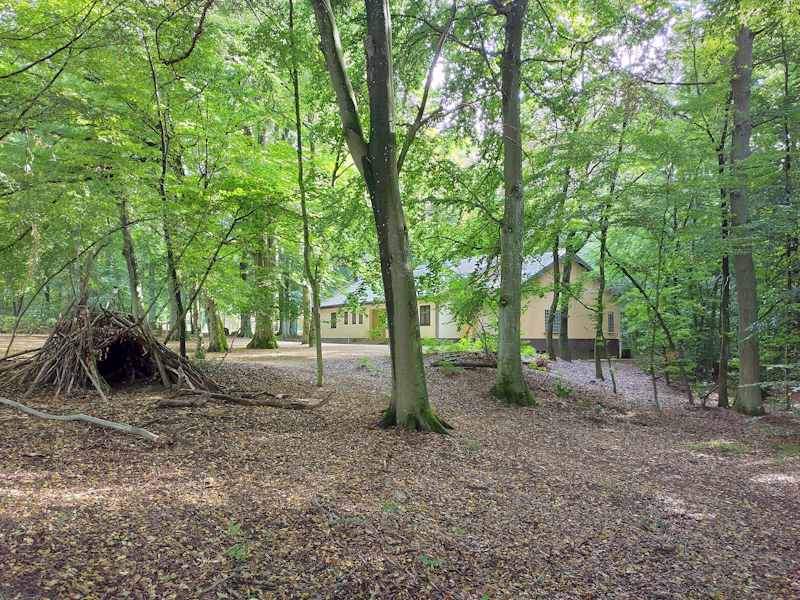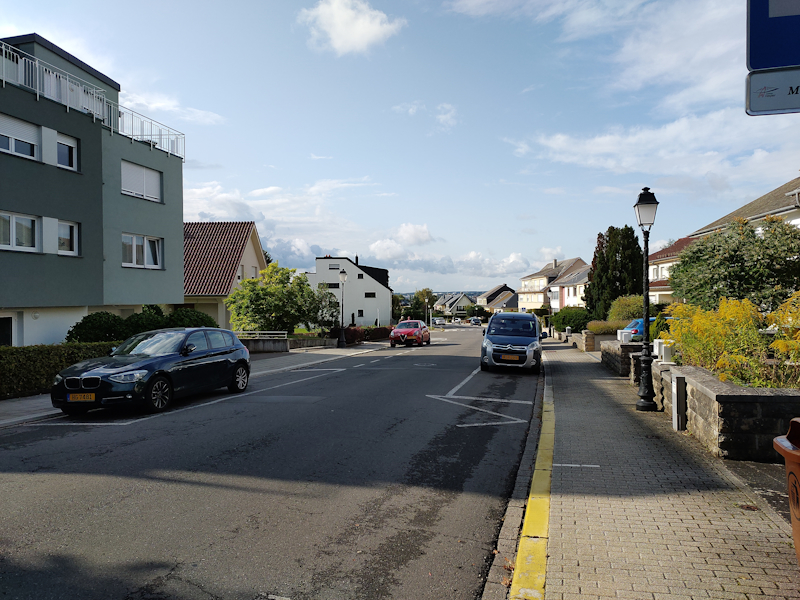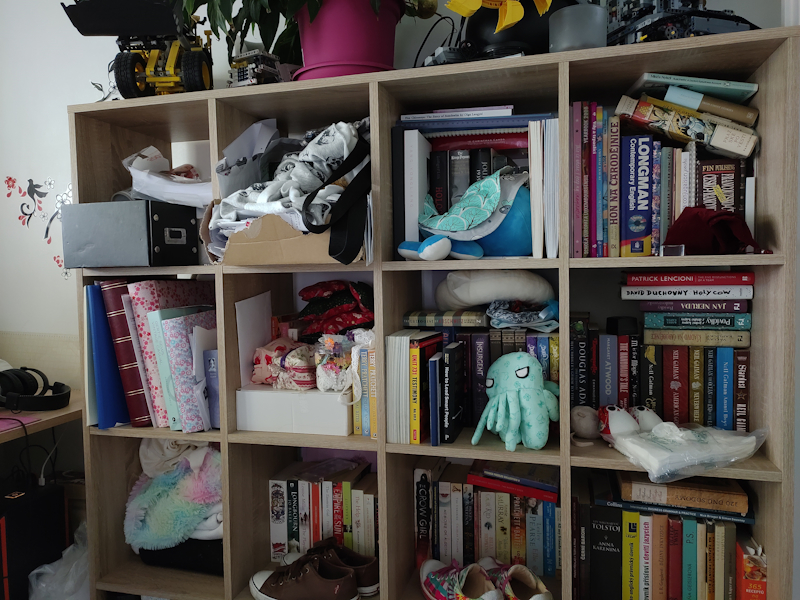The Nubia Red Magic 3 Review: A 90Hz Gaming Phone With Active Cooling
by Andrei Frumusanu on September 27, 2019 9:00 AM EST- Posted in
- Mobile
- Smartphones
- ZTE
- Nubia
- Snapdragon 855
- Nubia RedMagic 3
Camera - Daylight Evaluation
The cameras on the Red Magic 3 are quite straightforward: there’s just one rear module. I’ve heard plenty of times now from some people that they don’t care too much about the cameras on a gaming smartphone, but on the other hand I still think the vast silent majority of users will still put a lot of value to at least have a “good” camera in their phones, even if it doesn’t pretend to be quite as versatile as that of other vendors.

[ Red Magic 3 ] - [ S10+ (E) ] - [ S10+ (S) ]
[ Xperia 1 ] - [ P30 Pro ] - [ Mi9 ] - [ G8 ]
[ Reno 10x ] - [BlackShark 2 ] - [Pixel 3 ] - [iPhone XS ]
In the first scene, the Red Magic 3 is off to a good start in terms of the amount of detail in the scene. The best comparison here is the Xiaomi Mi9 as well as the OPPO Reno 10x, as both phones use the same IMX586 camera sensor. The RM3 beats both of these competitors in the amount of detail captures as it avoids any unnecessary noise reduction that would blur the scene – especially visible in the leaves on the ground in this scene.
While detail is good, there’s a bit of a lack of contrast which is accentuated by the ever so slightly too bright overall exposure of the photo.

[ Red Magic 3 ] - [ S10+ (E) ] - [ S10+ (S) ]
[ Xperia 1 ] - [ P30 Pro ] - [ Mi9 ] - [ G8 ]
[ Reno 10x ] [ BlackShark 2 ] - [ Pixel 3 ] - [ iPhone XS ]
In the next shot, the RM3 again does well in terms of detail and is the best amongst the IMX586 phones in this comparison.
The shot is slightly underexposed and there’s a definitive lack of definition in the shadows, something essentially all the phones with this sensor are suffering from.

[ Red Magic 3 ] [ S10+ (E) ] - [ S10+ (S) ]
[ Xperia 1 ] - [ P30 Pro ] - [ Mi9 ] - [G8 ]
[ Reno 10x ] - [ BlackShark 2 ] - [ BlackShark 2 ] -
[ Pixel 3 ]
Here we see another excellent showcase of detail, quite above what many phones are able to achieve.

[ Red Magic 3 ] - [ S10+ (E) ] - [ S10+ (S) ]
[ Xperia 1 ] - [ P30 Pro ] - [ Mi9 ] - [G8 ]
[ Reno 10x ] - [ BlackShark 2 ] - [ Pixel 3 ]
[ iPhone XS ]
This shot showcases some of the different HDR algorithms between the phones. There’s visible halos around the power lines on the Red Magic 3 which would be the result of the local tone-mapping of the darker elements against the brighter sky. The foreground was actually overcast by clouds so it shouldn’t be too bright, however I still feel the RM3 is slightly underexposed in this regard.

[ Red Magic 3 ] - [ S10+ (E) ] - [ S10+ (S) ] - [ Xperia 1 ] - [ P30 Pro ]
[ Mi9 ] - [ G8 ] - [ Reno 10x ] - [ BlackShark 2 ] - [ Pixel 3 ] - [ iPhone XS ]
Indoors again I feel the RM3 is slightly underexposed as it’s lacking any levels above 85%. The image also appears quite contrasty and that’s because of the lack of definition in the shadows, it’s just lacking a more natural dynamic range, and it’s also a bit undersaturated. Details are good, although here in medium light we’re seeing quite a lot more noise compared to the brighter outdoor shots.
Daylight Camera Conclusion
I didn’t have too high expectations for the Red Magic 3’s camera, but it still managed to showcase relatively competitive results. The camera’s handling of details is distinctly different of that of other phones with the same sensor and it ends up most of the time ahead of the competition in this regard.
HDR and exposure were adequate – it certainly wasn’t the best in any regard but it still managed to be competitive. I think here the sensor’s hardware limitations are hard to overcome as I’ve seen similar results in dynamic range by essentially all the IMX586 based phones this year.
Overall, I think the Red Magic 3 is a quite good daylight camera, as long as you’re not having overly too high expectations.










31 Comments
View All Comments
stephenbrooks - Friday, September 27, 2019 - link
The irony I've noticed is the higher-end the phone (or laptop) is, the faster the battery seems to drain. Presumably because of high-spec components.oRAirwolf - Saturday, September 28, 2019 - link
https://en.wikipedia.org/wiki/Project_AraEj24 - Friday, September 27, 2019 - link
https://en.wikipedia.org/wiki/Project_Aradidn't pan out
webdoctors - Friday, September 27, 2019 - link
The future is streaming, even consoles in the living room are headed towards cloud streaming. With 5G and wifi everywhere on the horizon, its nuts to try to lug a highend SoC into the mobile arena.If an Nvidia Shield TV with 3 GB RAM can do streaming no reason you need such a high end SoC for a streaming gaming phone. They could build a proper streaming gaming phone and have it with much better battery life and lower cost.
peevee - Friday, September 27, 2019 - link
Streaming sucks, streaming over wireless sucks more (hint: large and unpredictable latency).peevee - Friday, September 27, 2019 - link
Plus of course ongoing subscription costs.abufrejoval - Friday, September 27, 2019 - link
Streaming doesn't have to be from the cloud: Your gaming desktop in the next room might do just as well.I use that for kid's LAN parties, where I put notebooks on the dinnertable to avoid lugging the gaming towers to the "hot spot".
And yes, cables, even 100Mbit/s, beat WiFi any time of the day even for local streaming (e.g. Steam remote play).
Of course, a certain degree of masochism is required to game on a phone when you can have a proper screen (or simply younger eyes).
PeachNCream - Friday, September 27, 2019 - link
I used to do quite a bit of streaming via Steam from a desktop PC that I had running headless and crammed into a corner near my cheap ISP router. It was wired at 100mbit. The other end was an Atom n450 netbook running Linux on WiFi and its NIC topped out at 54mbit. It was pretty good for stuff like Fallout 3 and Skyrim. Latency was decent even when there was other usage of the local network for things like Youtube streaming or web surfing (the gaming desktop was the only thing not on wireless so phones and other laptops were being used by family members). I wouldn't want to play a twitchy shooter type thing over it, but for pretty much anything else it worked really well. I think in the intervening three or so years, things have probably gotten better but I can't test that since I no longer have a gaming PC, just some casual stuff that runs natively under Linux on my laptops. I haven't even had Steam installed in the last couple of years since entertainment is slowly shifting over to my phone these days. There just isn't much need for PC gaming or streaming between PCs.FunBunny2 - Sunday, September 29, 2019 - link
"With 5G and wifi everywhere on the horizon"Real 5G???? outside of sports stadiums, not going to happen. hell, it can't even get into a stick built house. you'll need a rooftop antenna to capture the signal. just watch.
"Verizon uses a window or roof-mounted 28GHz antenna to grab the 5G signal, which is distributed via WiFi from a home router indoors."
here: https://www.lightreading.com/mobile/5g/verizons-fi...
IOW, Real 5G ends up being little different from phone pole fiber.
peevee - Friday, September 27, 2019 - link
You have missed the most important spec of a mobile phone - wireless protocols/frequencies supported.It is not an iPod after all.